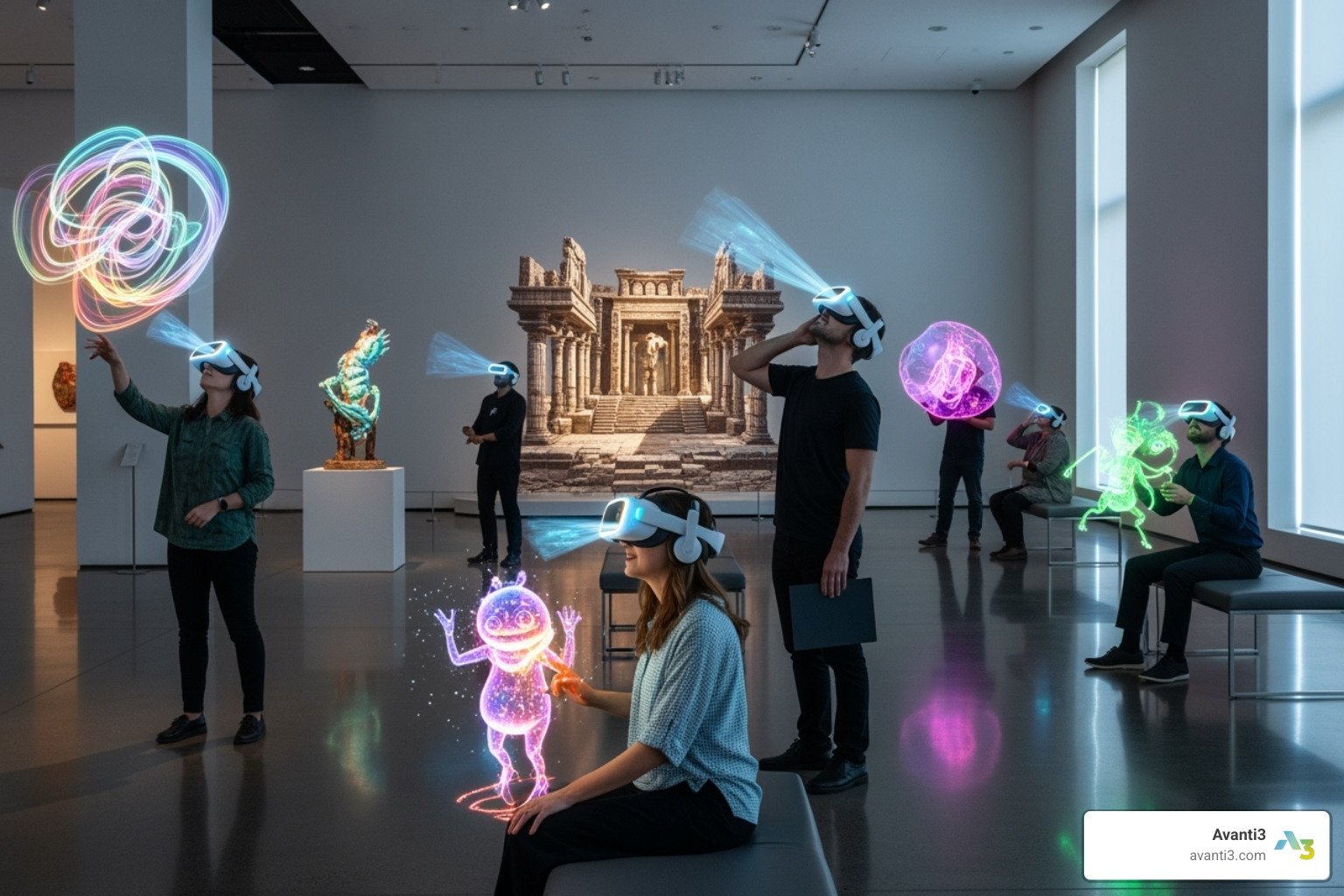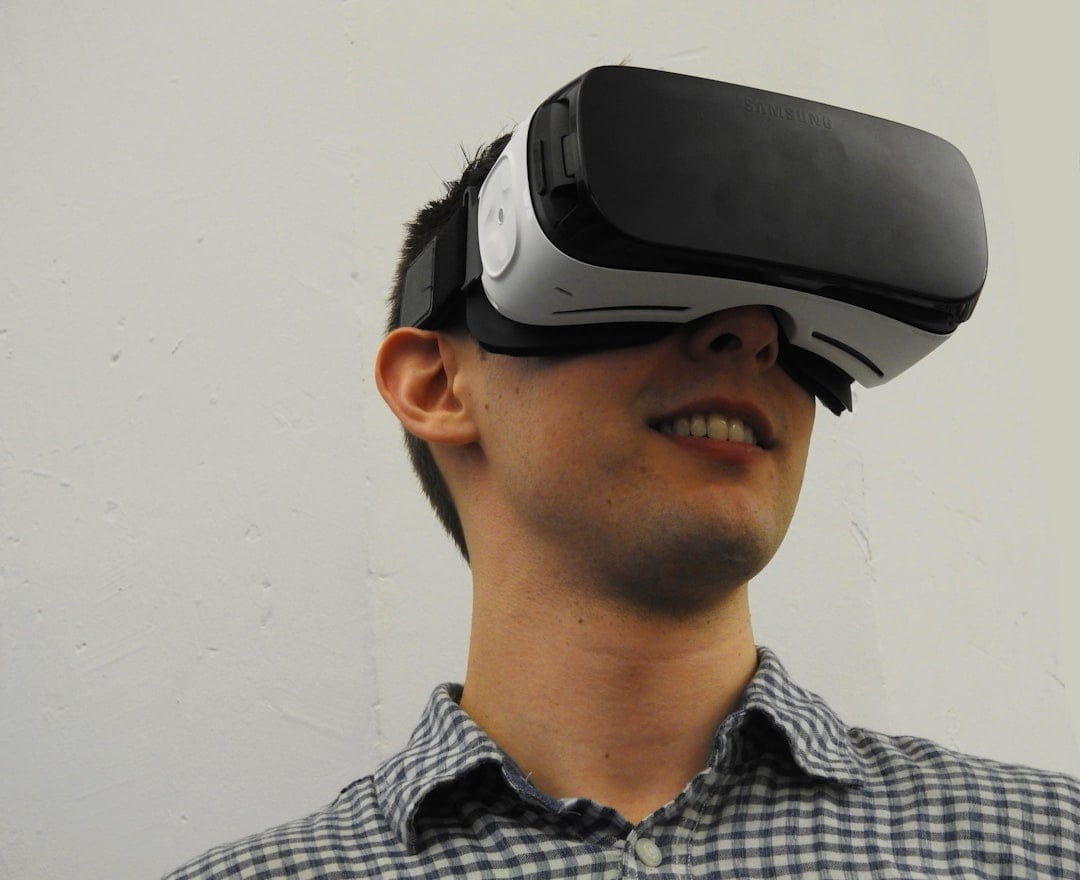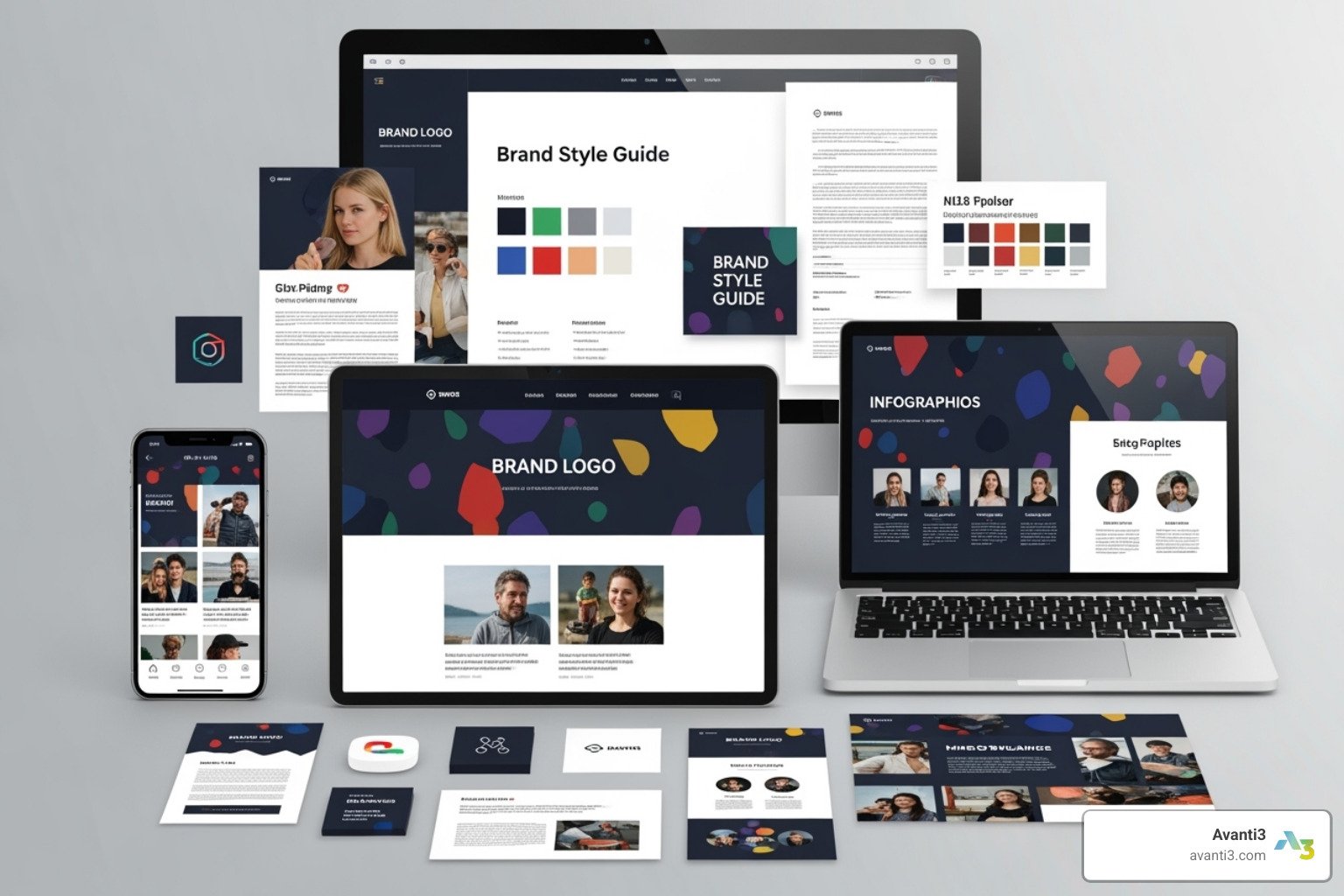A New Dimension of Culture
How can virtual reality be used in exhibitions to transform static displays into living, breathing experiences that captivate modern audiences? VR technology offers museums and galleries five key applications:
- Immersive storytelling – Transport visitors to ancient Rome or inside Van Gogh’s studio
- Global accessibility – Reach audiences worldwide and assist those with mobility challenges
- Interactive education – Let visitors manipulate artifacts and explore historical events firsthand
- Heritage preservation – Create digital archives of fragile items and temporary exhibitions
- New artistic mediums – Enable artists to craft entirely virtual worlds and experiences
Museums worldwide are facing a challenge. Digital-native audiences expect more than static displays and dusty placards. With attention spans shrinking and entertainment options exploding, cultural institutions must evolve or risk losing relevance.
The numbers tell the story. Research shows that 79% of people want to use digital technology to explore museum collections currently unavailable to the public. Meanwhile, successful VR exhibitions like the Musée d’Orsay’s Impressionist experience drew 18,000 visitors in just five months, while Horizon of Khufu attracted over 250,000 visitors in 2024.
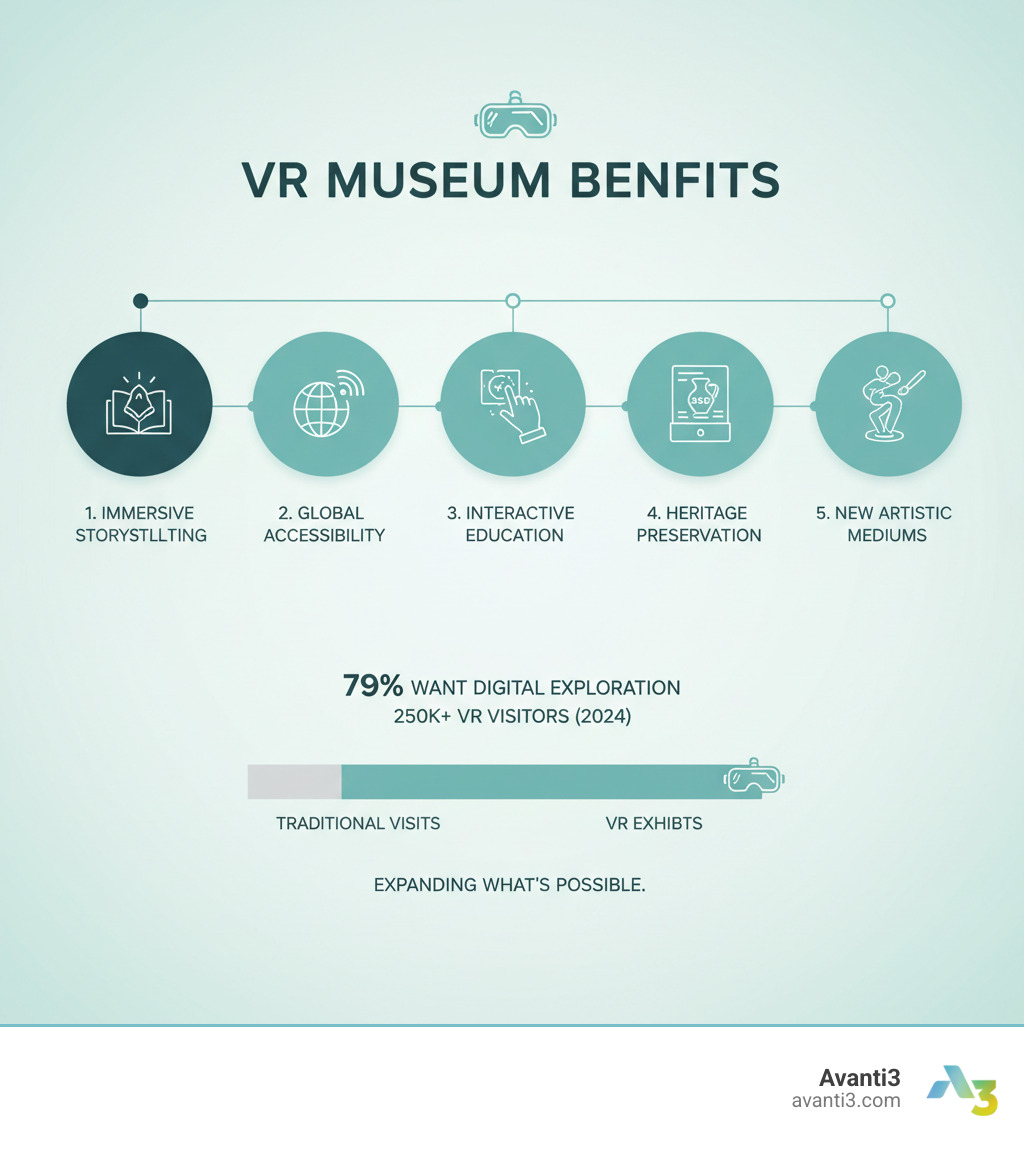
VR isn’t replacing traditional museum visits – it’s expanding what’s possible.
As Avanti3, we’ve helped countless businesses harness cutting-edge technology to create meaningful connections with their audiences, including understanding how can virtual reality be used in exhibitions to build loyal communities around cultural experiences. Through our work scaling innovative ventures, we’ve seen how immersive technology can transform engagement and open new revenue streams for forward-thinking institutions.
How Can Virtual Reality Be Used in Exhibitions to Transform the Visitor Experience?
The magic happens when you slip on a VR headset and suddenly find yourself transported from a quiet museum hall into the busy streets of ancient Rome. How can virtual reality be used in exhibitions isn’t just about adding cool technology – it’s about creating moments that take your breath away and leave lasting memories.
VR transforms exhibitions by turning passive observers into active participants. Instead of reading about history behind glass cases, visitors can now walk through it, touch it, and experience it firsthand. This shift from static displays to dynamic experiences is revolutionizing how we connect with art, history, and culture.
The beauty lies in VR’s ability to contextualize objects and showcase their true scale. A small pottery shard becomes meaningful when you can see the busy marketplace where it was once used. A painting comes alive when you can step into the artist’s studio and watch their creative process unfold.
How can virtual reality be used in exhibitions for immersive education and storytelling?
Picture this: you’re standing beside the Great Pyramid of Giza, not as a tourist, but as an ancient Egyptian watching its construction. This is the power of historical recreations in VR. The “Horizon of Khufu” experience captivated over 250,000 visitors in 2024 by letting them live history, not just read about it. Similarly, “TitanicVR” created a profound emotional connection by placing visitors on the ship during its final moments.
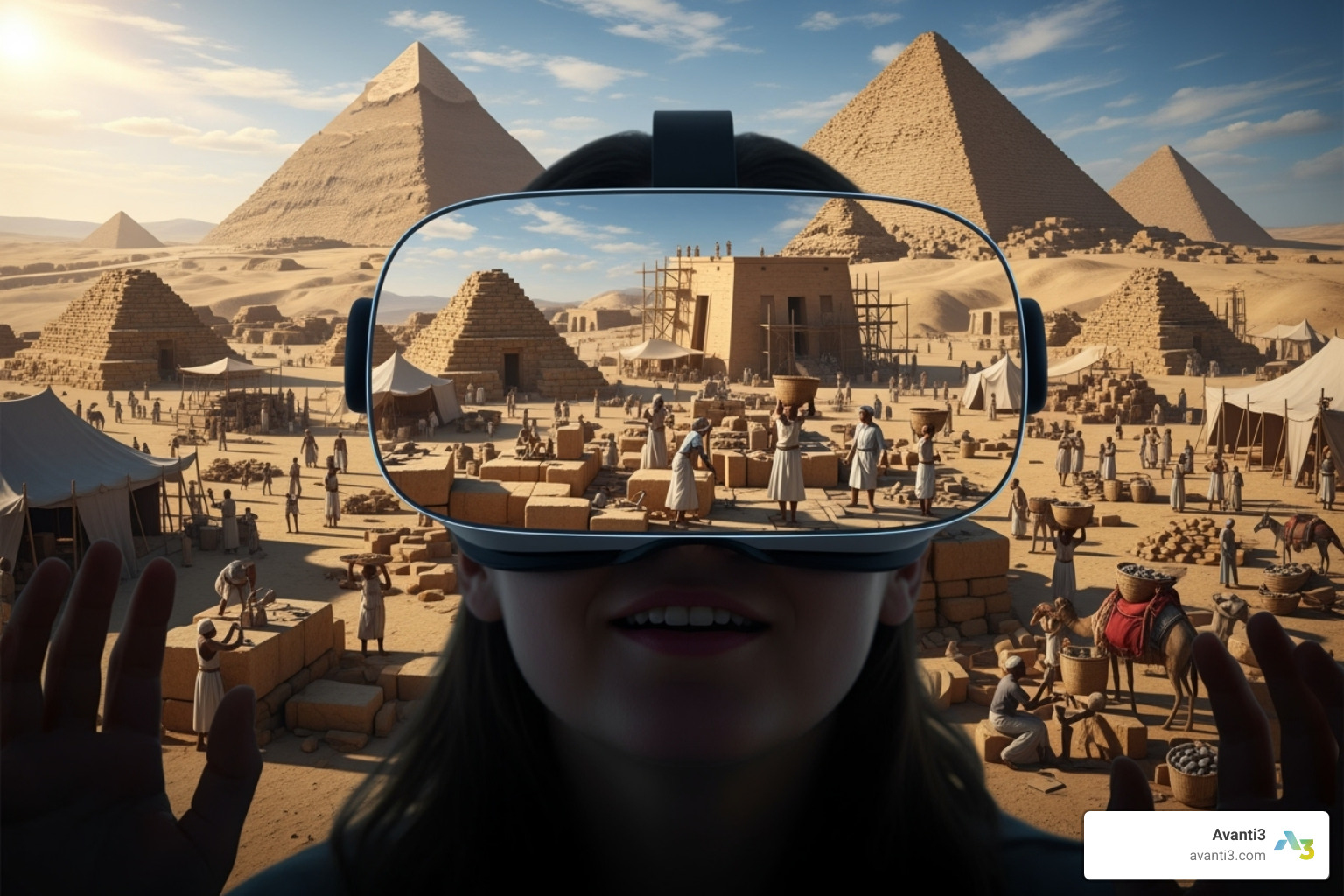
Museums can transport visitors back centuries with stunning accuracy. The Musée d’Orsay’s “Tonight with the Impressionists, Paris 1874” brought visitors to the original exhibition to mingle with artists, while the Victoria and Albert Museum’s “Curious Alice” engaged younger audiences with an interactive journey down the rabbit hole. Even difficult histories, like the slave ship La Amistad, can be explored in VR to create a deeper understanding that textbooks cannot achieve.
Gamified learning and interactive narratives transform education into an adventure, allowing visitors to make choices and forge personal connections to the past. We’ve seen how thoughtful Digital Experience Design can turn these technological possibilities into truly meaningful human experiences that visitors remember long after they leave.
How can virtual reality be used in exhibitions to expand access and preserve heritage?
One of VR’s most significant benefits is breaking down barriers. Geography, mobility challenges, and time no longer limit who can experience our world’s cultural treasures. The “Kremer Museum,” for instance, exists entirely in virtual reality, making its collection of Dutch and Flemish masterpieces globally accessible to anyone with a headset.
The public demand is clear: a recent Museums Association report (2025) found that 79% of people want to use digital technology to explore collections locked away in storage or too fragile to display.
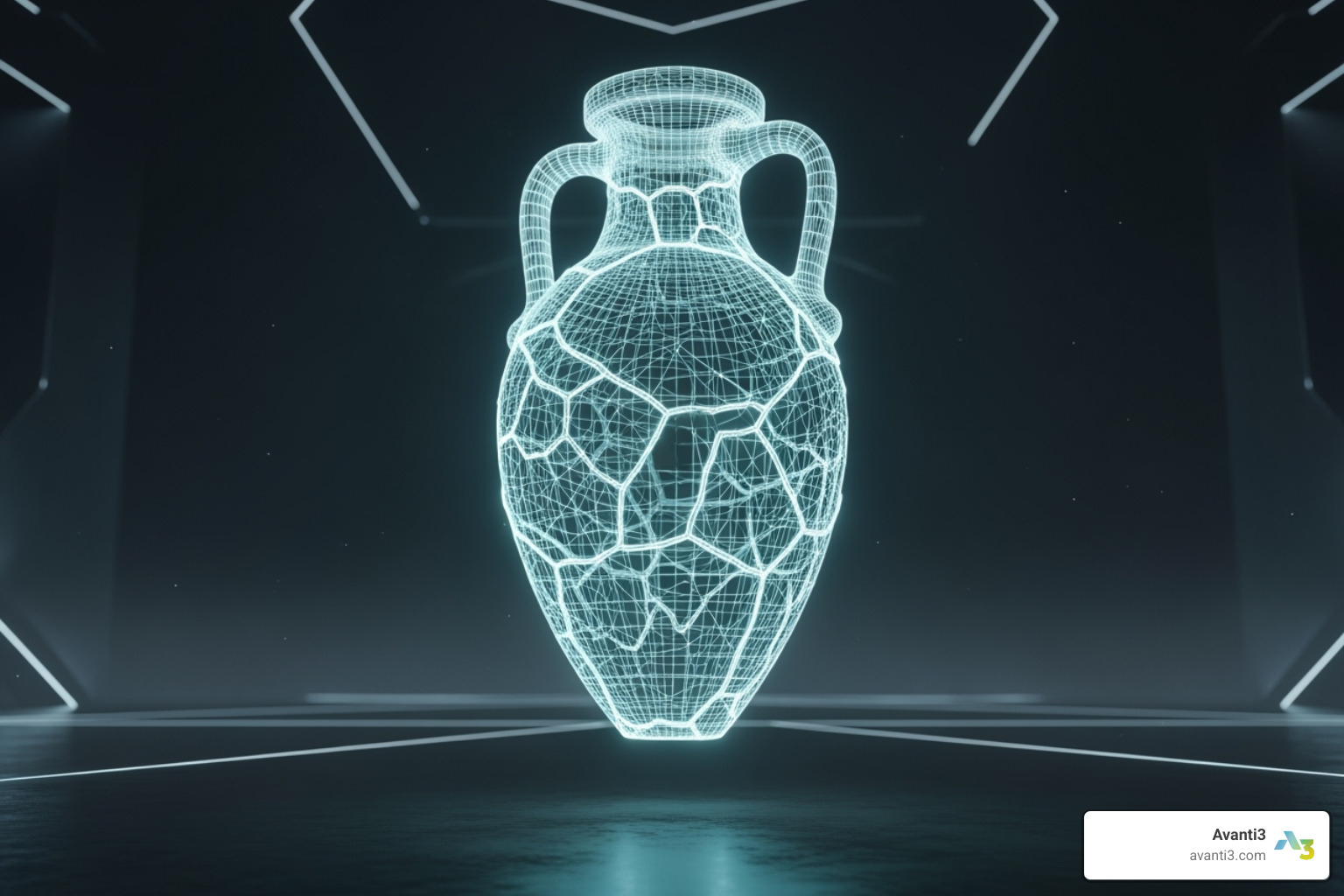
Heritage preservation also takes on new meaning. Through 3D scanning and digitization, museums can create perfect digital twins of fragile artifacts, allowing visitors to examine them up close without risk. This is especially powerful for the 90% of museum collections typically sitting in storage, as VR can create virtual archives that bring these hidden treasures to light. Furthermore, preserving temporary exhibitions in VR creates a lasting digital legacy that continues to educate and inspire long after a physical show closes.
Our work in Blockchain Art Authentication shows how these digital preservation efforts can be secured and verified, ensuring that virtual cultural heritage maintains its authenticity and value across time.
Key Applications: From Virtual Tours to New Artistic Mediums
The applications stretch far beyond simple museum walkthroughs. Virtual gallery tours range from 360-degree panoramic experiences (like the Smithsonian’s online tours) to fully rendered 3D museums that curate masterpieces in digital space. The “VR Museum of Fine Art” lets visitors examine high-resolution artwork from impossible angles, zooming into brushstrokes and experiencing installations from perspectives that physical visits cannot offer.
Recreating artist studios provides intimate glimpses into creative processes. London’s Tate Modern created a fascinating companion to their Modigliani retrospective by immersing visitors in a 3D model of the artist’s Paris studio. Walking through the space where masterpieces were born creates connections that traditional wall text simply cannot match.
The Louvre’s “Mona Lisa: Beyond the Glass” experience exemplifies this perfectly, allowing visitors to examine the famous painting’s wood panel texture and hidden details up close – something impossible with the actual artwork protected behind glass and crowds.
Perhaps most exciting is VR as an artistic medium itself. Artists like Marina Abramović are pioneering entirely new forms of expression. Her climate change piece “Rising” brought viewers face-to-face with a detailed avatar of herself, leading them through melting polar ice caps and forcing difficult decisions about environmental action. This wasn’t just art to observe – it was art to experience and feel.
Doug Aitken’s “Open” exhibition pushed boundaries further, featuring multiple immersive visions available simultaneously in four global galleries through VR. Interactive art becomes truly interactive when viewers aren’t just observers but active participants in the creative experience.
The emergence of Generative AI art is opening even more possibilities, creating unique worlds and artistic styles within virtual environments. We’re moving toward a future where visitors become co-creators, challenging traditional ideas about authorship and engagement.
These applications don’t replace traditional museum experiences – they improve and complement them, adding dynamic layers that deepen understanding and connection. Our expertise in Virtual Art Experiences focuses on crafting these meaningful encounters that visitors carry with them long after the headset comes off.
Navigating the Practicalities: Challenges, Costs, and ROI
Implementing VR isn’t without its problems. Museums must steer high development costs—a custom tour for Banská Štiavnica cost around $30,000, while a simpler experience ran $10,000. Hardware expenses for headsets and powerful computers, plus ongoing maintenance, add to the upfront investment.
Operational challenges include establishing hygiene protocols for shared headsets, addressing the user learning curve (as many visitors are new to VR), and providing adequate staff training. Some visitors may also experience simulation sickness, which requires careful experience design to mitigate.
Despite these challenges, the ROI potential is compelling. The global virtual tourism market is projected to reach $111.16 billion by 2033. Research shows that 38% of people are willing to pay for virtual cultural heritage experiences. Beyond direct revenue, VR attracts younger demographics, boosts overall attendance, and opens doors to grants focused on digital inclusion.
Here’s how different VR approaches compare:
| Experience Type | On-site VR | At-home VR |
|---|---|---|
| Pros | Controlled environment, high-end hardware, dedicated staff support, maximum immersion | Global reach, convenience, lower operational costs, personal exploration pace |
| Cons | High setup costs, limited scalability, hygiene protocols, potential motion sickness | Variable user hardware, less environmental control, requires personal VR equipment |
| Typical Costs | High (hardware, custom content, staffing, dedicated space) | Moderate (platform development, content optimization, distribution) |
| Best For | Signature experiences, historical recreations, interactive installations, premium offerings | Virtual tours, educational modules, digital archives, reaching global audiences |
The Future of VR: What’s Next for Immersive Exhibitions?
The future of how can virtual reality be used in exhibitions is incredibly exciting. We’re moving toward a world where VR experiences become as natural and accessible as pulling out your smartphone.
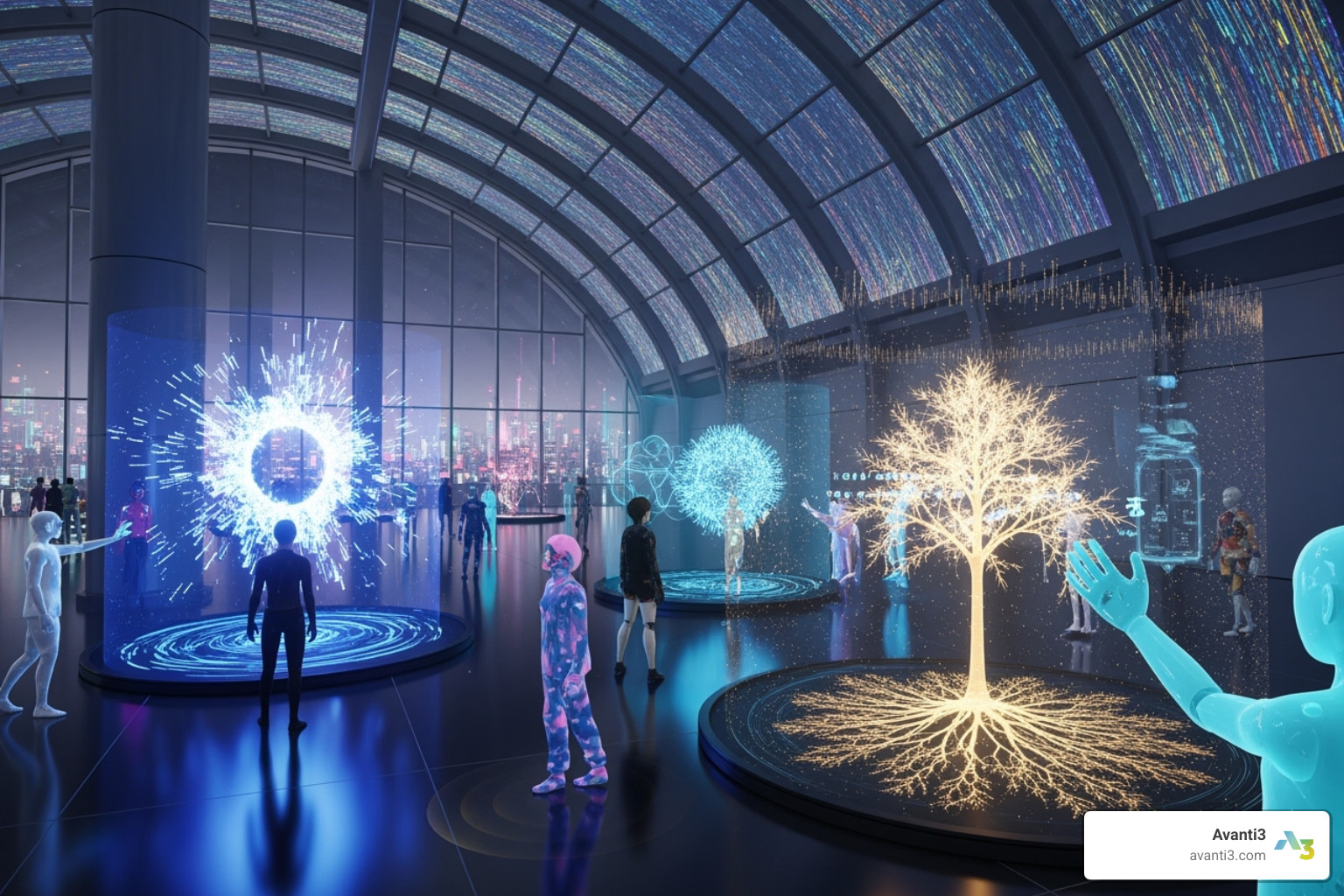
Haptic technology will add the sense of touch to virtual experiences. Imagine feeling the rough texture of an ancient stone carving or the smooth surface of a marble sculpture. This additional sensory layer will make virtual encounters feel remarkably real.
AI-powered guides will revolutionize personalization. Instead of generic audio tours, intelligent avatars will respond to your questions, adapt stories based on your interests, and learn from your interactions to create truly unique journeys. Every museum visit could be completely different, even in the same virtual space.
Cloud rendering and 5G integration will eliminate hardware barriers. High-quality VR experiences will stream directly to lightweight devices, making immersive exhibitions accessible anywhere with a good internet connection. No more expensive local hardware or technical setup headaches.
Social VR spaces and metaverse museums represent perhaps the most exciting development. These platforms will let friends from different continents explore exhibitions together, discussing art and sharing findies in real-time. The National Museum of Natural History’s “Cabinet of Virtual Reality” already hints at this future, allowing visitors to explore species connections collaboratively.
Early metaverse platforms are showing what’s possible when virtual environments become social spaces. Imagine attending a gallery opening with friends from around the world, all represented by personalized avatars, sharing reactions and insights as you move through digital exhibitions together.
The key insight is that VR won’t replace physical museum visits – it will complement and improve them. You might start exploring an exhibition virtually from home, then visit in person for deeper engagement, and later return to the virtual version to revisit favorite moments or explore details you missed.
This hybrid approach creates richer, more layered cultural experiences. Virtual reality extends the museum visit beyond physical boundaries, letting cultural engagement continue at home, in classrooms, or wherever curiosity strikes.
At Avanti3, we’re actively exploring these possibilities through our work in Augmented Reality (AR) & Virtual Reality (VR) Immersive Experiences, helping cultural institutions build the engaging digital experiences that will define tomorrow’s museums.
Conclusion: Curating the Future of Immersive Exhibitions
We’ve seen how can virtual reality be used in exhibitions to transform passive viewings into active adventures. VR is not just a gadget; it’s a bridge that creates lasting emotional connections by allowing visitors to experience history and art firsthand.
The benefits are clear: VR breaks down barriers to access, with 79% of people wanting digital access to unavailable collections. It preserves fragile heritage for future generations and engages audiences in new, profound ways. While challenges like cost and technical problems exist, successful exhibitions prove that the ROI is compelling.
The future is a hybrid model where physical and virtual visits complement each other. AI-powered guides, haptic technology, and social VR will create even richer experiences. At Avanti3, we understand that embracing this technology means more than just keeping up with trends. Museums and cultural institutions that integrate Web3 technologies, AR/VR, and AI today are building tomorrow’s cultural landscape. They’re creating sustainable revenue streams, engaging younger audiences, and preserving heritage in ways that seemed impossible just a few years ago.
By embracing this technology, institutions are not just preserving the past; they are actively building the museum of the future.
Ready to step into this immersive future? Explore how to create your own Virtual Reality Experiences with us and find what’s possible when technology meets imagination.

